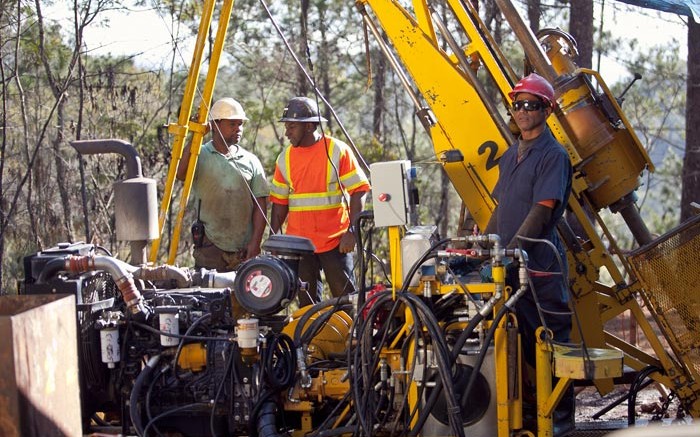Shares of Unigold (TSXV: UGD) rose 46%, or 14.5¢, to 46¢ per share following positive drill results from its Candelones Extension deposit, which is part of the company’s 210-sq.-km Neita Concession in the Dominican Republic.
Recent drilling was designed to test potential epithermal feeder systems at Targets B and C of the deposit. The first hole to test post-mineral mafic dikes intersected a high-grade interval of 14 metres averaging 14.94 grams gold per tonne, 51.6 grams silver per tonne, 0.3% copper, and 3.6% zinc, and a second interval of 6 metres averaged 10.30 grams gold, 5 grams silver, 0.3% copper and 1.7% zinc.
The high-grade gold and silver mineralization is located near the magnetic dike, which could act as a potential marker horizon to guide future drilling, the company said.
“Our exploration model suggests that these mafic dikes, in addition to defining potential conduits, also remobilized mineralization and concentrated it along the contact of the dikes,” Unigold chief executive Joe Hamilton said in a statement.
“The mineralization is startlingly consistent and evenly distributed along the intercept length, ranging from 5.0 grams per tonne to 32.0 grams per tonne,” Hamilton said, adding that the high-grade intercept is within a depth of 100 metres.
So far, the company has completed 12 drill holes (4,742 metres) of the planned 15,000-metre program on the Candelones Extension.
A 2015 technical report estimates an inferred mineral resource of 5.2 million tonnes averaging 5.27 grams gold and 0.35% copper for 894,000 oz. gold and 41.2 million lb. copper.
In the last year, Unigold’s shares have traded in a range of 10¢ and 67¢. At press time, the company has a market capitalization of $53.4 million based on 129 million common shares outstanding.
— This article first appeared in MINING.com, part of Glacier Resource Innovation Group.


Be the first to comment on "Unigold rises on Candelones results"